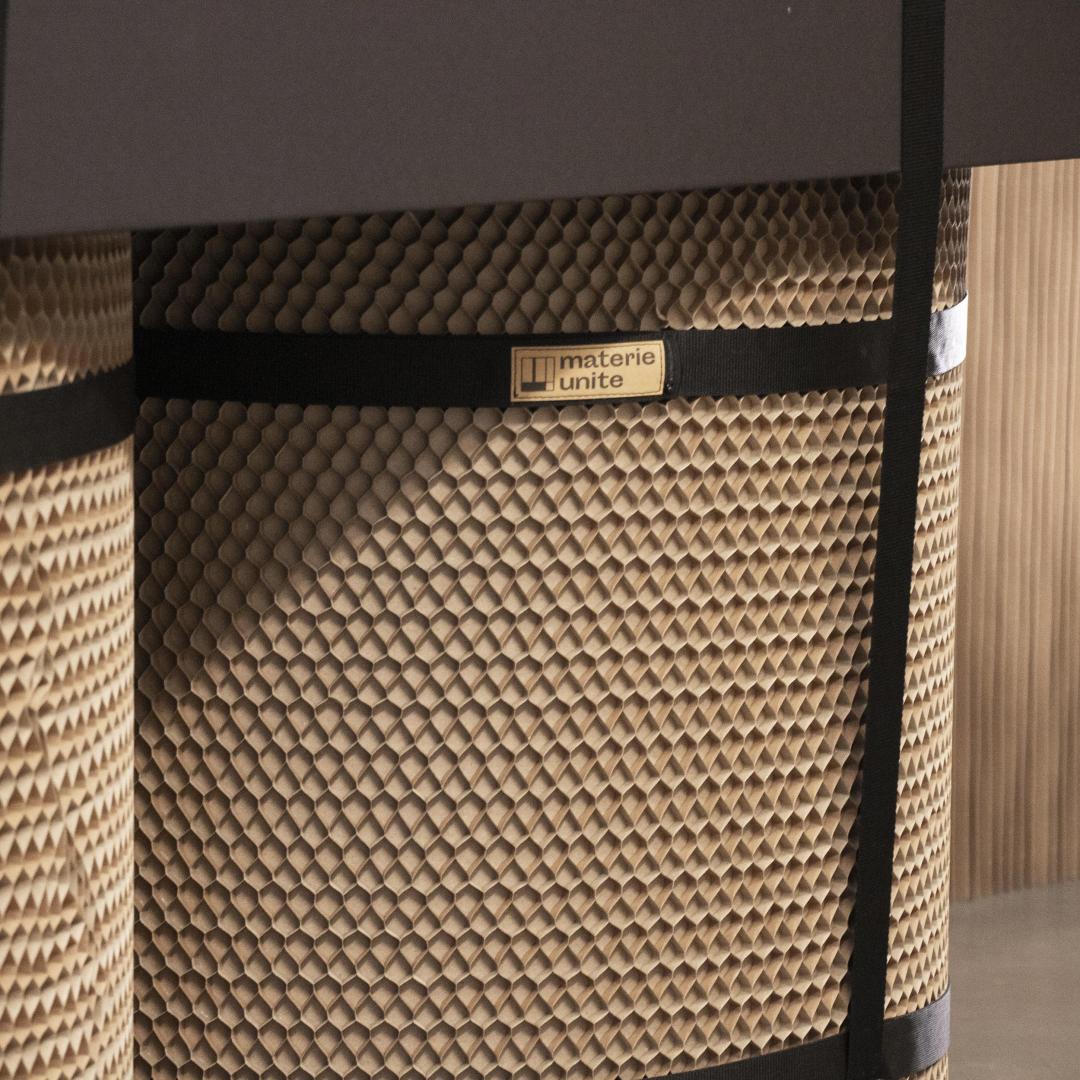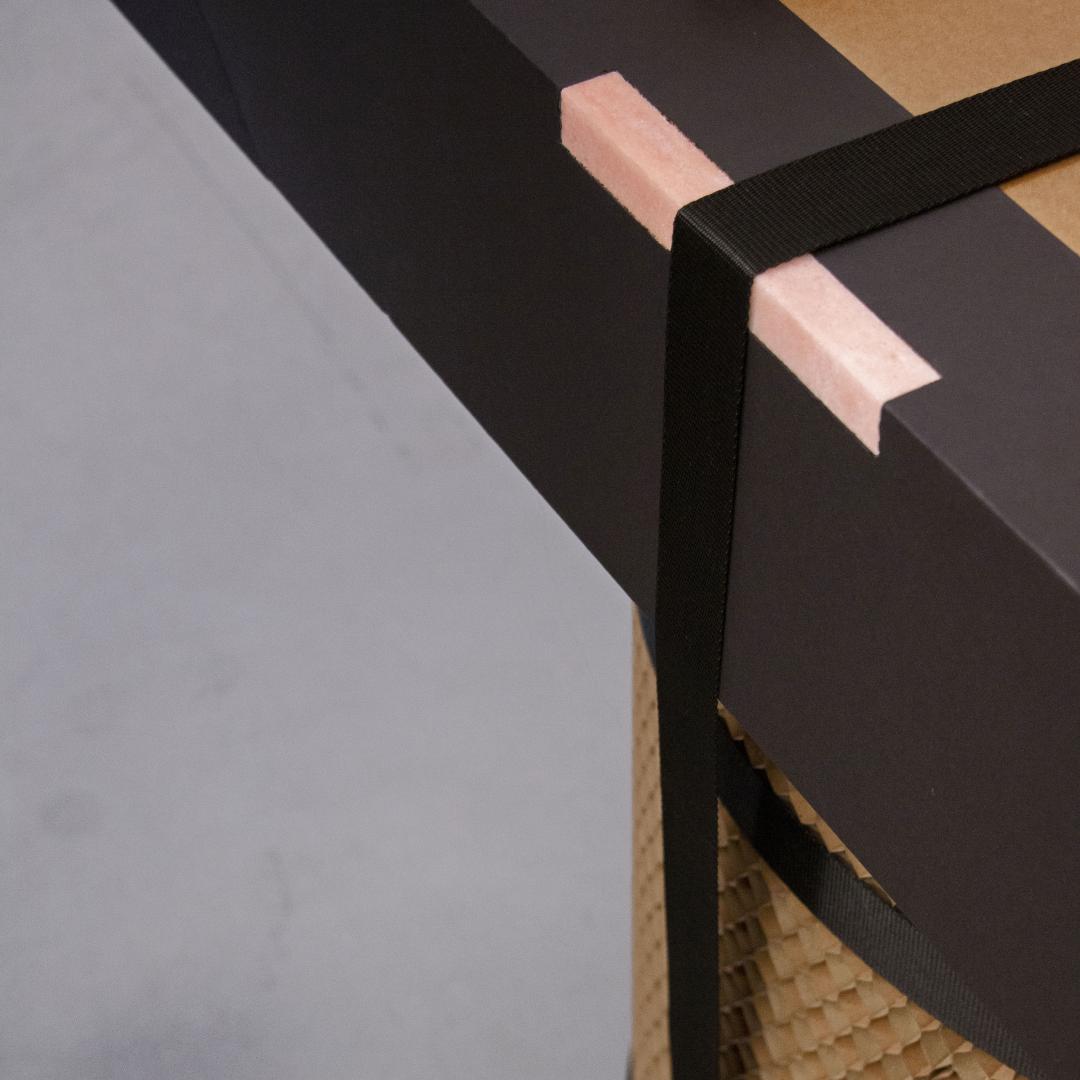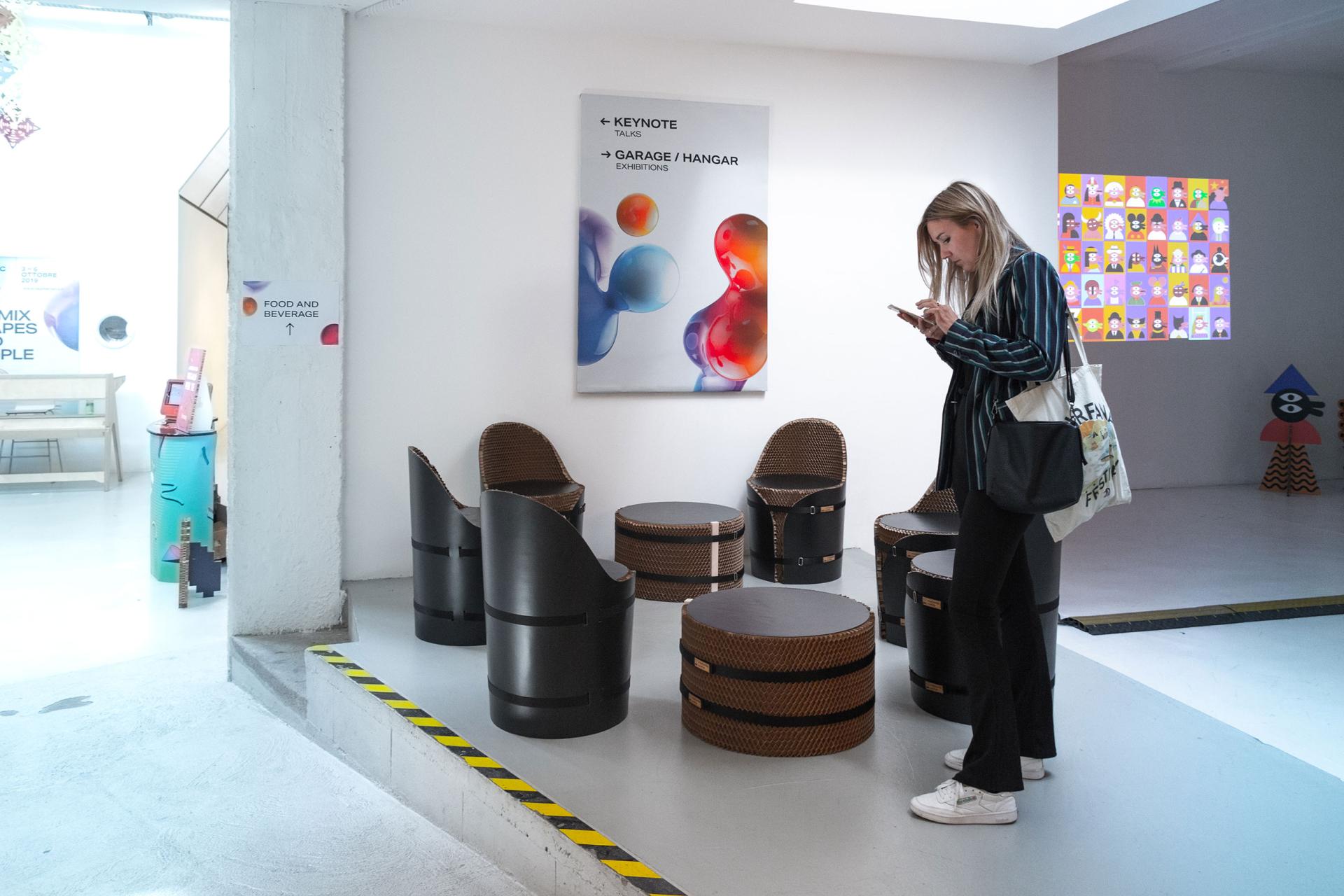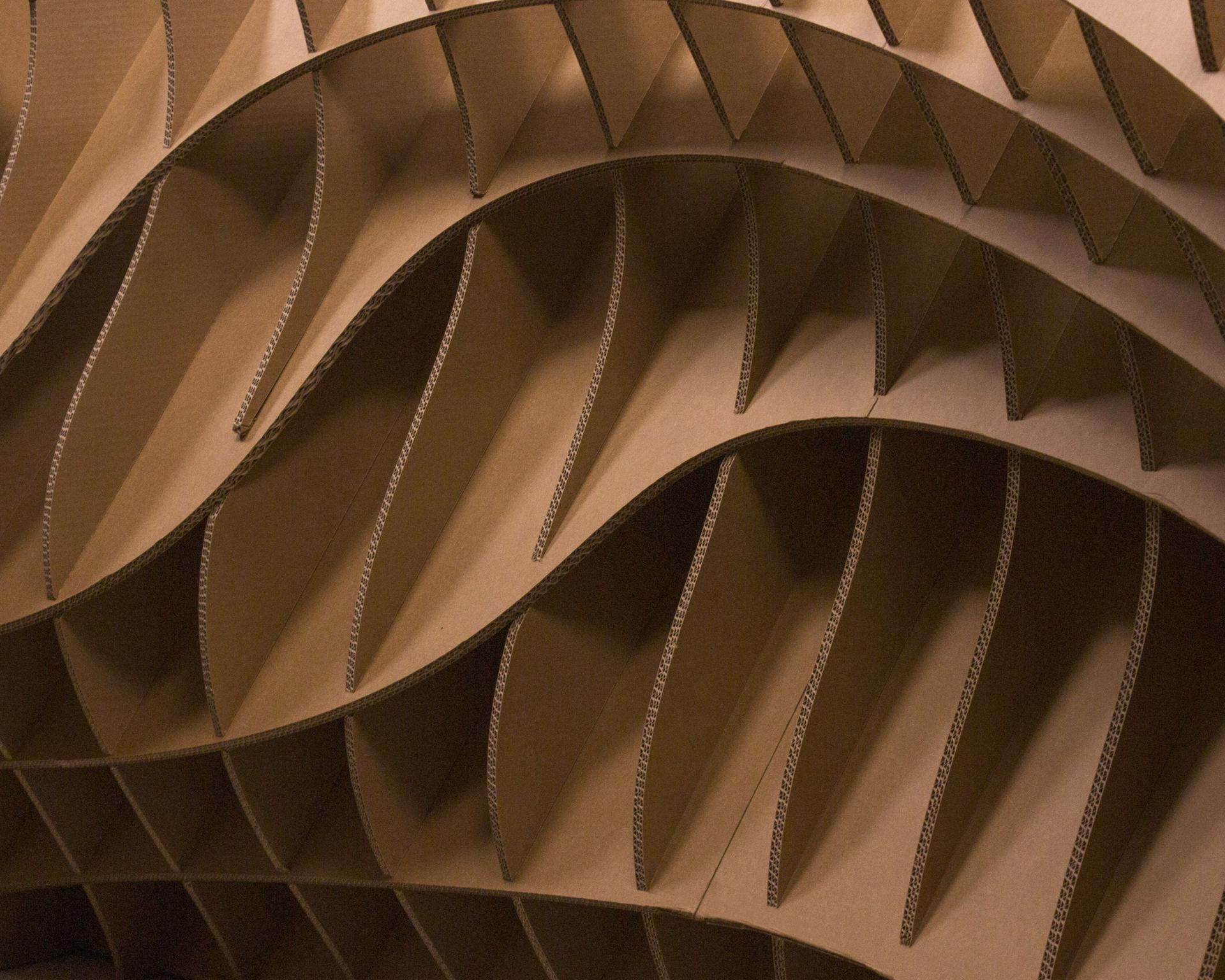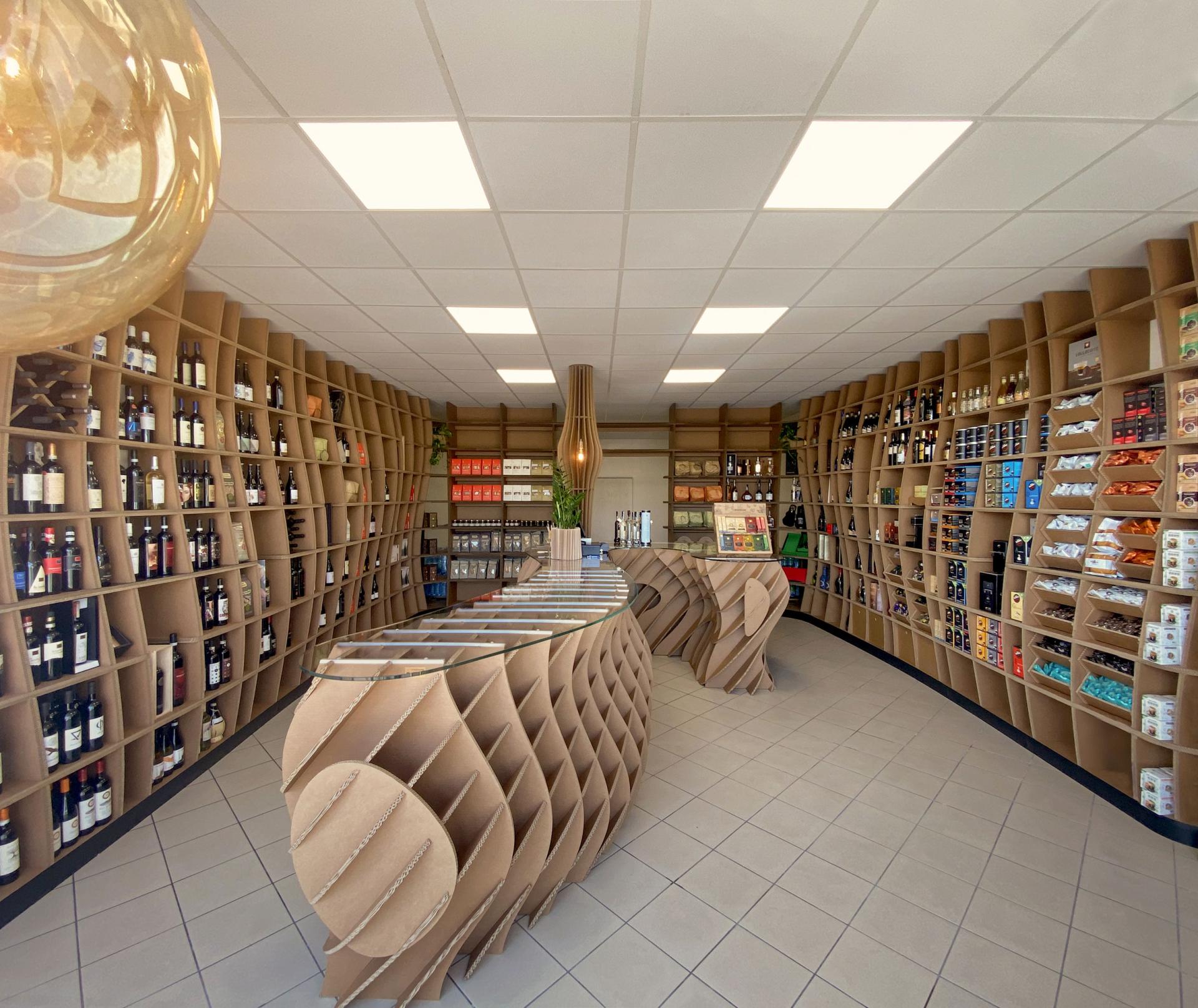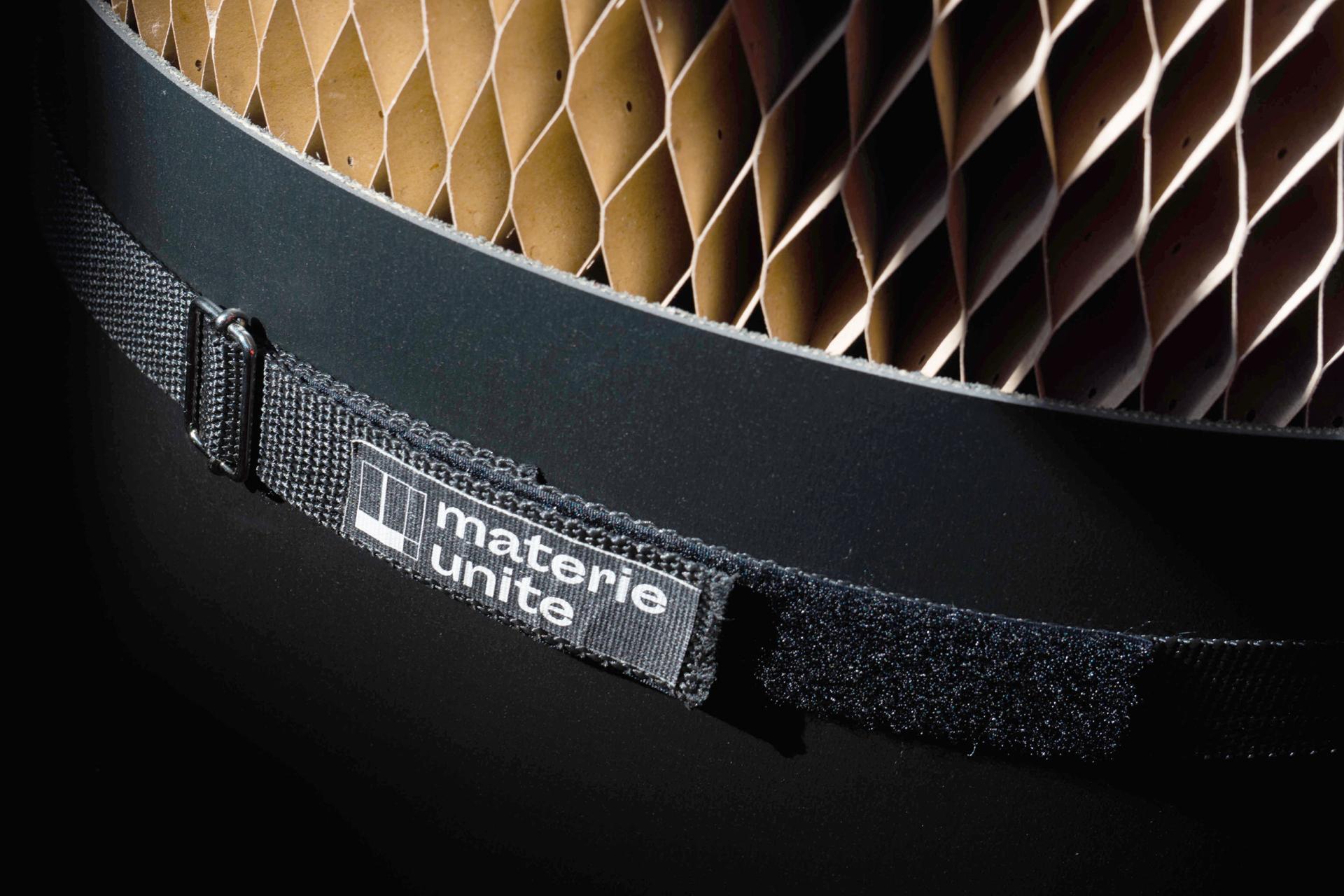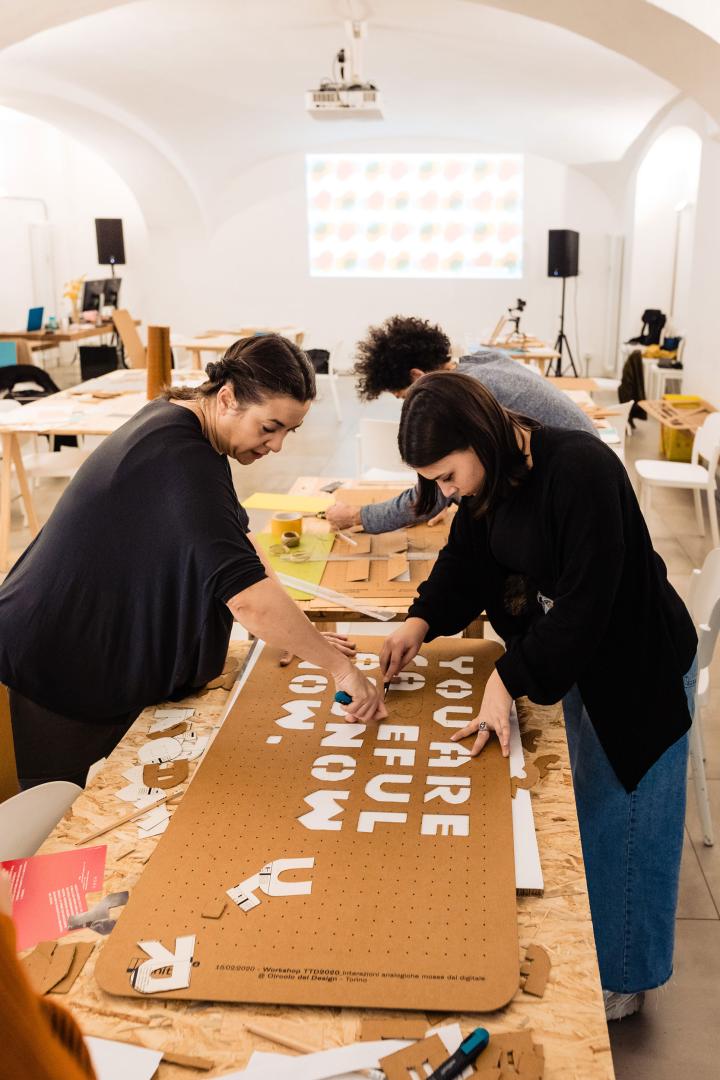materieunite
Basic information
Project Title
Full project title
Category
Project Description
Recycled materials, digital production, parametric project design and made in Italy are at the core of materieunite. We design and create permanent and temporary spaces through using recycled cardboard and other materials which are either recyclable or recovered from supply chain waste.
Project Region
EU Programme or fund
Description of the project
Summary
materieunite, which translates from Italian into ‘joint materials’, is the name chosen to represent a multifaceted entity bringing together different materials and diverse people that, in union, are trying to create a new production process. materieunite was born in October 2018 with the advent of industry 4.0 and the spread of digital production, as an R&D program of a company established in 1927 in central Italy, called ‘Arti Grafiche Celori’. Two cornerstones were decided to build upon: bringing together young, creative talent and the will of creating an innovative project that brought together technology, design and sustainability, significantly reducing material, energy and time waste. materieunite is now made up of eight young professionals, from architects to designers and programmers, that are advocates of a truly sustainable project. The company effectively offers the project planning, design and manufacturing of both temporary and permanent installations with advanced technological and esthetic features. For all the installations, only recycled cardboard, coupled with other resistant materials that are either recyclable or coming from supply chain waste, is used: all the materials are sustainable and circular. The first trial projects of the company were realized in its hometown, Terni, with the objective of blowing a wind of change through the city itself. Terni, located in central Italy, is in fact an industrial city which, up until recently, was a key production centre of highly intensive processes, namely steel and plastic. materieunite today is looking to grow and tackle the retail and event industry, helping the sectors to reduce waste.
Key objectives for sustainability
materieunite’s key sustainability objective is embedded in its core: circularity across all of its manufacturing processes.
All of the materials used in materieunite’s installations are optimised for the production phase, in order to minimize and almost eliminate waste. Nevertheless, the small waste that is produced is always recyclable and dismantled correctly in order to return it to the production cycle. Given that only recycled materials are used, even after the use-phase, the installation in its entirety can be recycled in order to produce new material. This is also possible thanks to the decision of using reversible joints instead of glue.
materieunite is built around a key material: sustainable cardboard. This material in fact is sourced via certified supply chains: 80% of the cardboard either comes from recycled material, and the remaining 20% is sourced from FSC certified sources. Further to this, thanks to its extensive use in the packaging world, cardboard is produced and can be found with the same measurements and characteristics all across the globe, which links to the project’s third sustainability objective.
The third sustainability objective is the ability to significantly reduce and almost eliminate CO2 emissions linked to transport. The final design, which is highly standardised, can be in fact produced in any location - ideally as close as possible to the one of final use - thereby reducing shipping emissions as well as packaging ones.
Key objectives for aesthetics and quality
materieunite’s projects are realised through first working on and thereafter cutting bi-dimensional cardboard panels, that are then joint between them becoming tridimensional.
Through investing in R&D, materieunite was able to acquire capabilities to develop advanced esthetic and functional programming languages. The first programming language materieunite has developed is named ‘Onda’ and has been created through the the development of an our own parametric algorithm (within Rhinoceros and Grasshopper): by designing certain organic volumes related to a space to decorate and given certain functions (e.g. counter, shelves, lamps, etc.), we can obtain in a few seconds an organic redesigned space which is dynamic and always different.
The second developed programming language is called “Colonna”. This language consists of a parametric algorithm that, similarly to the first one, produces tailor-made projects using tubular cardboard structures instead.
The third programming language is called “Piega”. Once spatial-volumes and related functions are inputted, the program is able to output shapes with a minimal design using as little material (panels) as possible, thereby obtaining greater efficiency and scalability of the product using only cuts and folds at 90 degrees.
On all of the produced cardboard outputs a second project-phase then begins, through the addition of sustainable materials to the material itself. This allows surfaces to be reinforced, made waterproof or covered by more durable materials.
Finally, materieunite’s algorithm allows to receive directly, automatically and in real time technical drawings that are then used in the production phase. This allows a great reduction of operations-time and related costs.
Key objectives for inclusion
One of materieunite’s key aims is to make sustainable design affordable and accessible to all, across all levels of society regardless of business’ size or operations. Design products are in fact often perceived as out of reach by the average European consumer due to their high-cost and their limited availability. Whilst the IKEA business model bridged much of that gap creating affordable furniture pieces, materieunite aims to go a step further by creating sustainable circular furniture for professional spaces, events and retail purposes. Further to this, it is no secret that at present day sustainability comes with a higher price-tag across most markets and again, often the average consumer cannot afford to pay a premium. Making sustainable design affordable therefore aims to include wider-society into the transition to a circular and low-carbon economy, going hand in hand with a “leave no-one behind” philosophy.
Innovative character
materieunite’s project is founded upon the principles of circular economy. Self-regeneration is embedded in every step of the workflow. Every material produced never becomes waste, but can be newly recycled and live once again as virgin material. materieunite has therefore decided to live by the principles of Reduce, Reuse, Recycle.
materieunite is able to significantly optimise resources and raw materials through its parametric project design tools which take into account not only the final product but also the size of the cardboard that will be used. This allows to truly reduce to the bare minimum any waste.
All of materieunite’s programming languages have a fil rouge to them: the reversible use amongst the different materials. Each final piece in fact must be dismantled as easily as it was built, in order to facilitate its full recycling at the end of its life.
We have furthermore recently developed an innovative subscription service linked to retail customers. Given the inherent circularity of the materials used, materieunite offers its customers the possibility to renovate their spaces at a favourable rate compared to the first installation due to being able to recover material viewing it as a resource.

